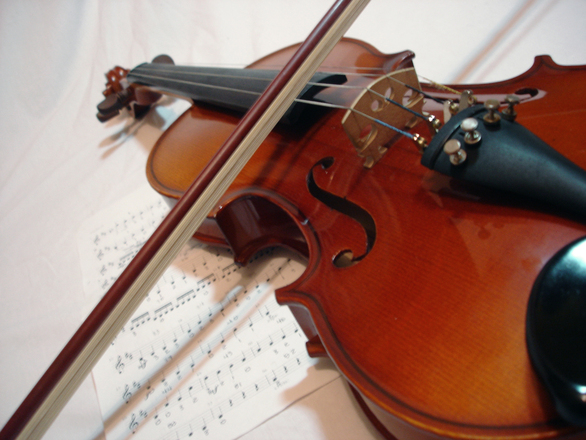Have you made Artist Trading Cards with your family?
When I stumbled across this great idea in the "Family Fun" magazine I thought, "What a fun way for kids to do art!"
Artist Trading Cards are small, so it doesn't take a long time to produce one and because of their size, it's fun to try a variety of techniques, but the BEST part of Artist Trading Cards is TRADING THEM!
So how do you get started? Here are some ideas:
ATC
Artist Trading Cards
Your ATC's should be exactly 2 ½ x 3 ½ inches.
You could use scissors or a paper trimmer to make your own cards.
Cardstock works very well.
Would NOT recommend computer/copy paper.
|
|
Rules:
1. Every card must be 2 ½ x 3 ½ inches in size.
2. They can be traded but never sold.
Suggestions:
1. Write your name on the back of every card you make.
2. Think about giving it a title when you are done.
3. Take your time.
4. Do your best work.
5. Use the whole card.
6. Remember, there is no such thing as “wrong” in art.
Suggested Supplies:
Black pen
Black permanent marker
Stamps (IE store bought stamps, potato stamps, foam stamps)
Ink to use with stamps.
Glitter
Markers
Colored pencils
Gel pens
Spin Art machine or Salad spinner (for making spin art)
Your thumb or other fingers (fingerprints)
Glue stick
Tissue paper
White glue
Stencils
Half dollar or glass – for tracing circles
Crayons
Watercolor paint
Scissors
Magazine cutouts
Fortune cookie slips
Seeds
Thread
Fabric
Stickers
____________________ (There are sooo many more ways you can decorate your cards, use your imagination.)
Suggested Techniques:
TESSELATION: Tessellation, a term used in art and science, refers to a repeated pattern that fills a defined area (such as a wallpaper design, a quilt, or many of M. C. Escher's artworks). To make a tessellation-inspired design, use a black pen to draw a freehand shape with several closed spaces (for example, a circle divided into pizza slices or a snowman). Fill each space with a tiny repeating pattern, such as dots, squares, flowers, circles, or triangles.
STAMPS: Store-bought or homemade stamps (such as a potato or a foam stamp) are easy for the youngest artists to handle and can be the centerpiece of a card embellished with markers, glitter, or other supplies. If you are using various colored inks, clean the stamp with a wet rag or baby wipe before switching shades.
LOOP-THE-LOOP: Loop a marker or gel pen around in a scribble, finally rejoining the line to the starting point. The image should look like a tangled piece of string with lots of loops. Fill each one with color, using marker, colored pencil, or gel pen.
SPIN ART: Attach a card to the center of a Spin Art machine with masking tape. Use tempera or acrylic paints and spin. For a variation, add interesting lines by gently scraping the wooden or plastic end of a paintbrush across the card as it turns. (If you don't have a Spin Art machine, try placing the card in the bottom of an old salad spinner; set it spinning, then remove the top and drip in the paint.)
FINGERPRINTS: Press your fingers onto an ink pad with washable ink, then onto a card. Use a pen or marker to add to the design. Stumped for ideas? Try drawing things that contain a circle or an oval: a spider, a ladybug, a snowman, a flower, a sun, or a moon.
STAINED-GLASS TISSUE: Cut various colors of tissue paper into pieces the size of a nickel or bigger. Using a glue stick, cover the whole card with the pieces; you can overlap them to create new colors. When the glue is dry, outline the edges of the pieces -- or "panes" -- with black permanent marker. To finish, paint the card with a thin coating of white glue.
VENN DIAGRAM: In math and logic, a Venn diagram, with its overlapping circles, is used to demonstrate shared qualities among different sets of things. Create a Venn diagram card by drawing around a small glass or a large coin with a black pen to form an overlapping pair of circles. Next, fill in the circles with designs. To make a true Venn diagram, fill the area of overlap with elements that appear on both sides.
RESIST: Create a simple design in light-colored crayon, then use a watercolor paint to wash or paint over the design. The card will absorb the watercolor paint, but the waxy crayon will resist it.
COLLAGE: The possibilities for a collage card are almost endless -- you can use magazine cutouts, seeds, thread, even fortune cookie slips. Adhere the materials to the card with a glue stick. If you're working with friends, pick a theme like soccer, spring, or space and see how each of you interprets it.
I am so glad I scanned in the actual article, because I was never ever to locate my magazine again, I've tried to find it online just to see ideas for cards, but there aren't as many pictures in the online version, so I am sharing the scanned images with you.
I hope you enjoy the ideas below as much as I have.
(If you want to read the text, open the photo in a new tab to see the image in it's larger size.)





